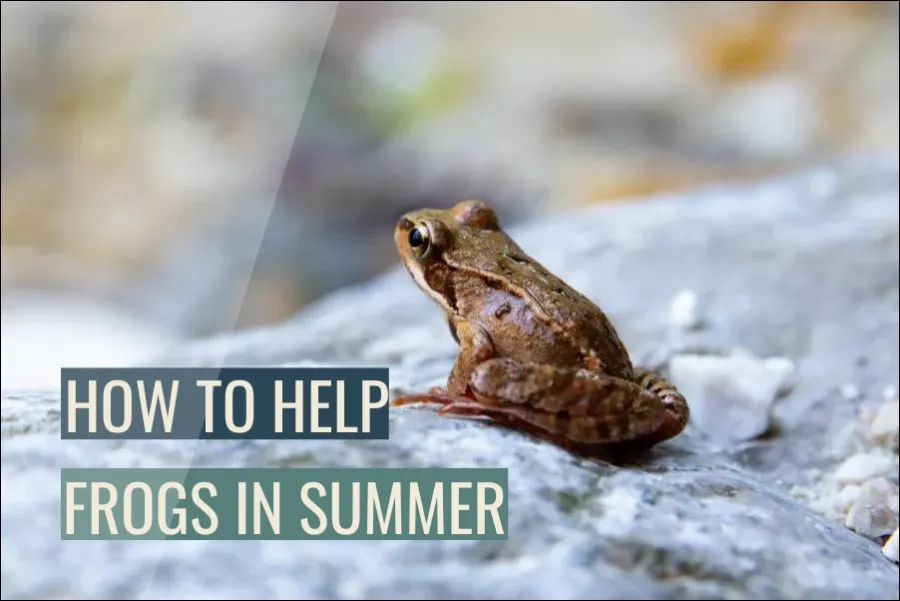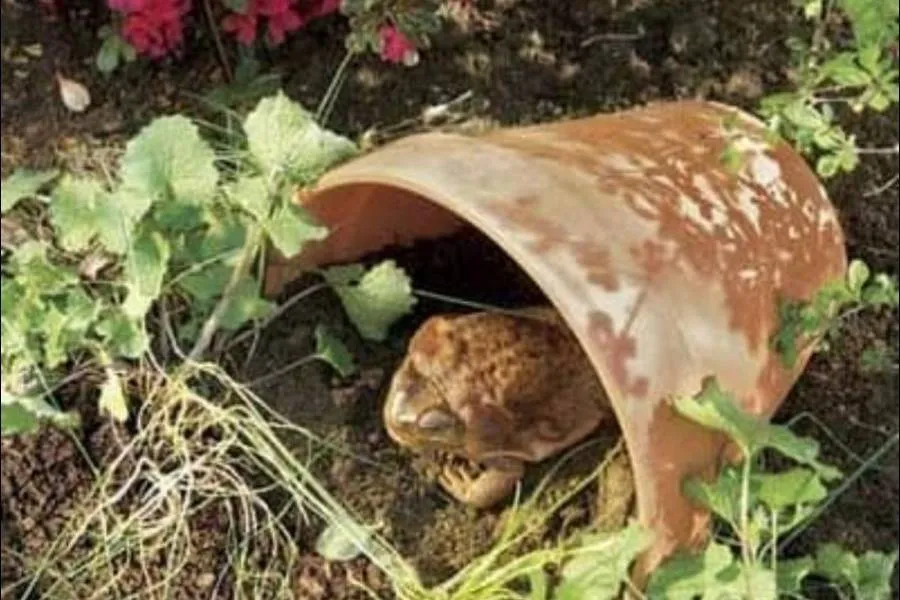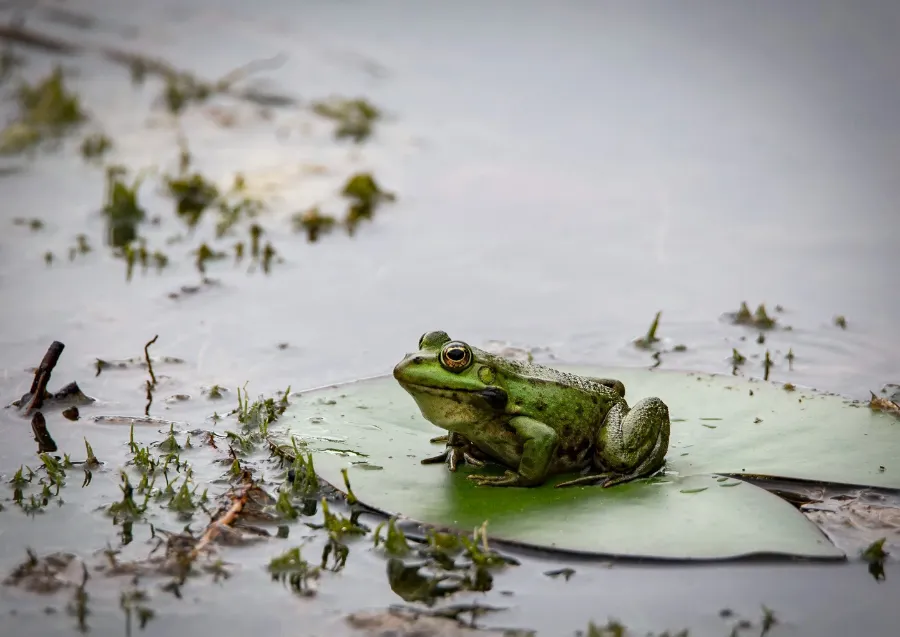
Summer is a time of warmth and abundance, but it can also be a challenging time for frogs. However, there are many things that we can do to support frog populations in the summer months.
From providing water and shelter to reducing the use of pesticides and other chemicals, there are many simple steps we can take to make a difference for these important animals.
Providing water and moisture
One of the most essential things you can do to aid frogs in the summer is to provide them with access to water and moisture. Frogs require water to drink and to keep their skin wet, and in the summer, the heat and dryness can make it difficult for frogs to get the water they require. You may help by providing a supply of water in your yard or garden, such as a little pond or a water dish. It is also a good idea to construct a drip irrigation system or use a soaker hose to keep the soil wet, as this will assist to create a more favorable environment for frogs. Frogs could be enticed to leap into your pool if you have one. Check for frogs in your pool on a regular basis and discover how to get frogs out of the pool.
Reducing the use of pesticides and other chemicals
Pesticides and other chemicals are toxic to frogs and other species, therefore they should be used sparingly or not at all. The heat and dryness of summer can make it easier for chemicals to penetrate the water supply and harm aquatic life, so use caution while applying these items. Instead, consider utilizing natural alternatives such as blooming plants that attract predatory insects or physical barriers such as netting or screens to keep pests at bay. Non-toxic pest management methods include hand-picking or hosing off bugs, as well as introducing predators such as birds or bats that will consume the pests. Reduce your usage of chemicals to make the environment safer for frogs and other species.
Protecting against habitat loss and degradation
Frogs rely on a range of habitats, including forests, wetlands, and grasslands, and these habitats are threatened by a number of factors, including development, pollution, and climate change. To help safeguard frogs throughout the summer, it is critical to conserve and restore their habitats. Supporting conservation groups, engaging in habitat restoration initiatives, or campaigning for regulations that protect natural areas are all examples of this. You may also help by building a frog-friendly garden or yard, which can give frogs with a safe and welcome environment.
Creating a frog-friendly garden

Aside from supplying water and avoiding chemical use, there are several additional strategies to build a frog-friendly landscape. Planting natural vegetation to offer cover and food for frogs, putting rocks or log piles for refuge, and building a habitat such as a “frog hotel” are some possibilities. Installing a small pond or marsh, or supplementing the frogs’ diet with live or frozen insects, can also provide a source of food for them. You may assist to support frog populations by designing a garden that fulfills their needs and provides them with a safe and welcome environment.
Participating in citizen science projects
Citizen science initiatives are research projects in which non-experts participate, and they may be an excellent way to get engaged in conservation efforts. There are several citizen science initiatives linked to frogs that you may engage in throughout the summer, such as monitoring frog populations, collecting data on frog behavior, or assisting in the identification and mapping of frog habitats. You may help gather valuable information on frogs and contribute to conservation efforts by participating in these initiatives.

Monitoring and conserving frog populations
You may help monitor and protect frog populations in other ways than participating in citizen science programs. For example, you can record frog sightings to local groups or agencies, which can aid in the tracking of frog population health and dispersion. You may also assist to safeguard frog habitats by donating to conservation groups or pushing for environmental regulations. You can help to guarantee that these critical species are preserved and thrive by actively monitoring and protecting frog populations.
Educating others about the importance of frogs
Finally, throughout the summer, you may aid frogs by teaching others about the importance of these species and the efforts that can be done to protect them. Frogs perform significant functions in the ecosystem and are environmental health indicators. You may help to generate support for conservation efforts and urge others to take action by increasing awareness about the importance of frogs and the risks they face. Sharing information on social media, chatting to friends and neighbors, or presenting information at schools or community events are all methods to educate others about frogs. You may also help groups that seek to safeguard frogs and their habitats, as well as push for conservation regulations. You may help to develop a groundswell of support for frogs by teaching people about them.
Creating or maintaining artificial ponds or wetlands
Frogs can benefit from artificial ponds or wetlands, especially in locations where natural ponds or wetlands are sparse. During the summer, you may build or manage an artificial pond or wetland by finding a good location, determining the size and form of the pond, and selecting appropriate plants and features. Consider the size and form of the pond, the depth and slope of the sides, the kind and number of plants, and the addition of objects such as pebbles or logs while establishing or maintaining an artificial pond or wetland. You may create a great home for frogs and other species by establishing or maintaining an artificial pond or wetland.
Planting native flora to provide cover and food for frogs
Frogs and other species can benefit from native plants as a source of cover and food. You may support frogs by growing natural vegetation in the summer, which will attract insects and other invertebrates, which will give food for the frogs. Cardinal flower, Joe Pye weed, milkweeds, and trees or shrubs that provide cover are examples of natural plants that attract frogs and other species. Planting blooming plants that attract predatory insects can also assist to lessen the need for pesticides. You may provide a more friendly environment for frogs and other species by planting natural plants.

Offering a source of food for frogs
Finally, you may aid frogs in the summer by providing them with food. Frogs feed on insects and other invertebrates, which may be in greater abundance during the summer. Installing a small pond or marsh, or supplementing the frogs’ diet with live or frozen insects, may offer a source of food for them. Planting native vegetation that attracts insects and other invertebrates is another option, as is installing a bird feeder or other habitat element that attracts these species. You may assist to sustain frog populations and ensure that they have the resources they need to flourish by providing a source of food for them.
Difference between helping frogs in summer compared to other seasons
Assisting frogs in the summer may differ from helping them in other seasons in numerous ways. Among the most significant distinctions are:
- Temperature: Summer weather is often hotter and drier, which might impact frog demands. Frogs, for example, may require more water and moisture to be hydrated, and they may be more susceptible to heat stress.
- Food availability: Insects and other invertebrates may be more numerous in the summer, providing a rich supply of food for frogs. Frogs, on the other hand, may experience greater competition for food from other species, forcing them to explore further away to get the nutrients they require.
- Habitat conditions: Frog habitats may be more vulnerable to deterioration or loss during the summer owing to causes such as development, pollution, or drought. This can make it more difficult for frogs to locate adequate habitat, and it may emphasize the significance of developing or maintaining artificial habitats such as ponds or wetlands.
Overall, assisting frogs in the summer may need considering the special demands and obstacles that these species confront at this time of year and changing your efforts appropriately.
- How to help frogs in spring
- How help frogs in winter
- How to help frogs in hot weather
- How to help frogs in the fall
In conclusion
In summary, providing water and moisture, reducing the use of pesticides and other chemicals, protecting against habitat loss and degradation, creating a frog-friendly garden, participating in citizen science projects, monitoring and conserving frog populations, educating others about the importance of frogs, creating or maintaining artificial ponds or wetlands, and planting native flora to provide cover are all things you can do to help frogs in the summer. By following these measures, you may assist to support frog populations and make the environment more suitable for these essential animals.

